gary payton
The Hall of Famer, Olympian, and Nine-time NBA All Star talks Cannabis, the strain named after him, and life after basketball. // pg. 24
SCULPTURAL JOINTS // pg. 26
GENTLEMEN SMUGGLERS // pg. 30
CYPRESS HILL // pg. 36

The Hall of Famer, Olympian, and Nine-time NBA All Star talks Cannabis, the strain named after him, and life after basketball. // pg. 24
SCULPTURAL JOINTS // pg. 26
GENTLEMEN SMUGGLERS // pg. 30
CYPRESS HILL // pg. 36

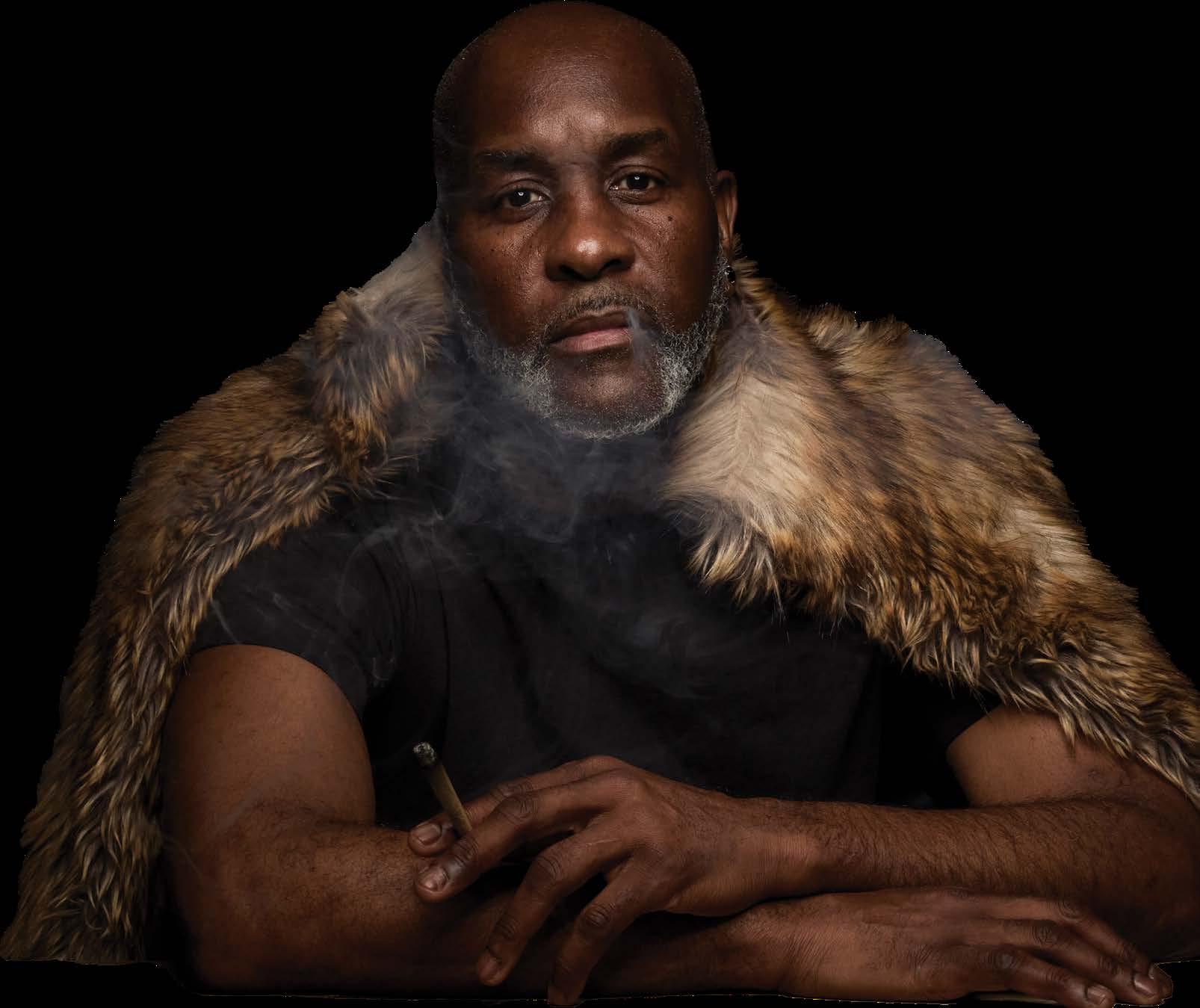





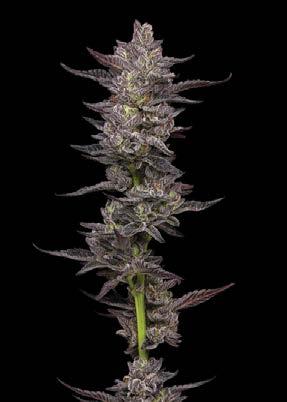




“The

— DEZ, BRAND AMBASSADOR

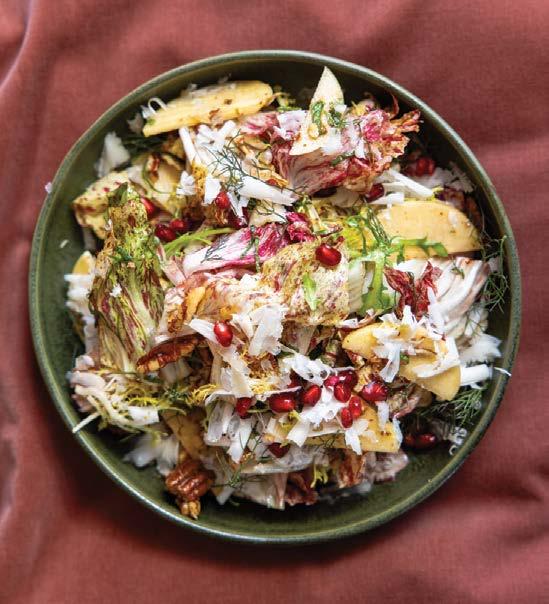













#306 SAN PEDRO
#308 GRAFFITI & CANNABIS
#309 BILLIARDS & CANNABIS



WES ABNEY CEO & FOUNDER
wes@leafmagazines.com
MIKE RICKER OPERATING PARTNER ricker@leafmagazines.com | advertising opportunities
TOM BOWERS CHIEF OPERATING OFFICER tom@leafmagazines.com
DANIEL BERMAN CREATIVE DIRECTOR daniel@leafmagazines.com
BOBBY BLACK LEAF BOWL DIRECTOR & HISTORIAN bobbyblack@leafmagazines.com
MATT JACKSON CALIFORNIA CONTENT DIRECTOR bobbyblack@leafmagazines.com
KAYL WOHL COPY EDITOR kayl@leafmagazines.com
ASHLEY HIRCHERT SOCIAL MEDIA LEAD ashley@leafmagazines.com
Known for his imaginative and iconic portraits of some of pop culture's biggest figures, from Ahnold to Biggie, from Jay-Z to Anthony Hopkins, Los Angeles-based photographer Timothy White always comes back with the shot. For this month's Culture Issue, White photographed NBA legend Gary Payton over a few hours at a basketball court and at his LA studio, documenting a special moment in time and capturing the essence of Payton's epic story. Read more about his life and career in Bowers' interview on pages 24-25.
PHOTO BY TIMOTHY WHITE FOR LEAF NATION TIMOTHYWHITE.COM | @TIMOTHYWHITE
AMY ALVES, PHOTOS
DANIEL BERMAN, DESIGN
BOBBY BLACK, FEATURES + DESIGN
JOSHUA BOULET, ILLUSTRATION
TOM BOWERS, FEATURES
SARAH CAPPARUCCINI, PHOTOS
WYATT EARLY, NATIONAL NEWS REX HILSINGER, FEATURES + PHOTOS
MATT JACKSON, FEATURES + ART MAZZEI, PHOTOS
BAXSEN PAINE, FEATURES
PYROSCOPIC, PHOTOS
JESSE RAMIREZ, DESIGN
MIKE RICKER, FEATURES + PHOTOS
TIMOTHY WHITE, PHOTOS
UNRULY RITUALS, PHOTOS
JAMIE ZILL, PHOTOS
We are creators of targeted, independent Cannabis journalism. Please email us to discuss advertising in the next issue of California Leaf Magazine. We do not sell stories or coverage. We can offer design services and guidance on promoting your company’s medicinal, recreational, commercial or industrial Cannabis business, product or event within our magazine and on our website, leafmagazines.com. Email ricker@leafmagazines.com to start advertising with California Leaf!



Cannabis culture sprang from the underground of prohibition like a weed thriving from a crack in the cultural sidewalk. It rose from oppression and stigma, from the hearts of activists and the streets where our plant was sold and treated like a hard drug.
We’ve seen the scene of Cannabis develop in movies, from “Cheech and Chong” to “Dude Where’s My Car,” “Pineapple Express,” and my personal favorite, “How High.” I’m currently back in college and using the proven method: study high, take tests high, get high scores! Stoner movies aren’t real life though, and what it means to be a Cannabis user has continued to evolve during the 15 years I have been publishing the Leaf. From underground to legal, from medical to recreational, from an illegal drug to something sold openly with bright branding and colors.
Cannabis culture has always had at least two sides. There are the farmers, who, despite being labeled drug dealers for years, are true people o f the earth. They make a living working with dirt, mixing nutrients, and dependin g on the plant to grow and provide a living. These are peaceful, passionate people, not “Breaking Bad” with chemicals in the RV.
Then there’s the consumer side, which at times has flirted with the drug dealer fetish of the ’90s and 2000s rap scene — an image balanced by the compelling stories of patients using Cannabis t o stay alive. This also includes the dealers of old, who varied from Grandma’s Boy-style basement dispensaries to real street hustlers moving packs. Weed is the one drug you can sell and use safely, so the culture of underground trapping has always influenced the culture, as the trap is the source of the weed itself.
So what is Cannabis culture?
“WHAT IT MEANS TO BE A CANNABIS USER HAS CONTINUED TO EVOLVE DURING THE 15 YEARS I HAVE BEEN PUBLISHING THE LEAF.”
Is it a farmer tending to plants lovingly under the sun or in a grow closet? A patient choosing full-extract Cannabis oil instead of chemotherapy? A parent using topicals, vape pens and a CBN edible at the end of the day to get to sleep? Is it the rizzed-up 21-year-old in bright clothes hitting a flavored vape during the day and smashing low-temp rosin dabs when they can afford it? Or a trapper in their 40s or 50s who started illegal, went med then rec, and now returns to the gray market due to overregulation and excessive taxation?
I believe it’s all of these examples, and in a larger sense, Cannabis culture is all of us. Just like the vibrant melting pot that makes America the greatest country in the world, our Cannabis community is full of people from all walks of life. From 18 to 80, across all demographics, we are united by the plant we share and love. With that comes a style and a culture that is unique, authentic and growing one toke at a time. Our culture is floating high in a cloud of healing, exactly what the world needs right now. So please share a joint, a puff and this magazine with friends and family, and invite them into our community to celebrate and heal this world together!





217,150
The amount of Cannabis related arrests in 2023, which represents a new 30-year low. In 2007, the same statistic was over 870,000.
$39b 98% $1.64b
According to drug seizure statistics from U.S. Customs and Border Protection, seizures of Mexican-grown marijuana have fallen by this amount over the past decade. Long gone are the days of weed coming into the States in the tires of an 18-wheeler.


$10k
The amount that four Cannabis businesses in Minnesota were fined when they were found to be selling illegal Cannabis. According to a report by the state Office of Cannabis Management, more than 199 pounds of illegal Cannabis was found at 134 sites between January and October of 2024.

According to Massachusetts' seed-to-sale tracker, this was the annual sales record set by the state in 2024. We hope to continue to see this and other markets expanding throughout the rest of this year.

68%
The percentage of Americans who supported the legalization of Cannabis in 2024, according to a poll from Gallup. We’ve come a long way from the 12% supporting the same thing in 1969.




$8.7m
Award from a copyright infringement lawsuit in favor of RAW Cannabis rolling papers’ parent company, related to a multiyear suit against India-based Brocone, which RAW alleged copied their packaging designs and product language.

2.3m
According to an analysis released by NORML, this is the number of Cannabisrelated cases that have been expunged or had records sealed since 2018. The states that participated the most in these efforts were California, Illinois, Missouri, New Jersey, New York and Virginia.


As we navigate the shifting landscapes of digital innovation, Cannabis commerce and creative culture, WEB3 and nonfungible tokens (NFTs) are shaping the future of how we connect, trade and transcend borders. This electric fusion of blockchain technology, art and Cannabis is lighting up the internet and shaping a global counterculture.
WEB3, the next evolutionary step for the internet, shifts the power dynamics of the digital world. By leveraging decentralized blockchain networks like Ethereum and Solana, WEB3 promises transparency, security and true ownership. Unlike the traditional internet, where corporations hoard data and dictate terms, WEB3 places the reins back in the hands of individuals.
For creators and visionaries like the team behind KILLABEARS, WEB3 has proven to be a fertile playground for innovation. Ben Cohen, Mikael Tyrsen and Mexico’s renowned illustrator Memo Angeles laid the foundation for KILLABEARS as an NFT collection in April 2022. The community focused ethos of WEB3 enabled the team to launch the collection as a "Free Mint" which went on to become a popular property. The team blended elements of art, gaming, entertainment, Cannabis and blockchain technology seamlessly.
Digital Collectibles, also known as NFTs have redefined the concept of ownership in the digital art realm. Each NFT is a unique, verifiable asset stored on the blockchain. Memo’s creation of 3,333 limited edition KILLABEARS have showcased how NFTs can spur cultural movements. These aren’t just digital art pieces — they’re gateways to a vibrant community and even real-world commerce such as Cannabis.

Building on their success, the team added a playful twist with the creation of 8,888 customizable KILLACUBS, further strengthening their community’s engagement. Their approach to NFTs, combined with innovative tools like Snapchat filters for character interaction, brings a multi-dimensional experience to fans— it’s about participating in a shared vision and becoming a part of a future-forward community.

Produced by KillaVerse Media, the KILLABEARS movie will be the first NFT-adopted, live-action movie to hit the big screen. Executive-producer actor Seth Green, will take this vision to a new level, intertwining storytelling and blockchain culture. As we await its release in the next 18 months, the KillaVerse NFT ecosystem continues to grow, uniting art lovers, gamers, Cannabis users and crypto enthusiasts.
Imagine a world where your favorite Kush strain is not only a smokable flower but also commemorated by a piece of art — an NFT-backed, limited edition treasure with provenance recorded on the blockchain. The KILLABEAR community has entered into the Cannabis industry with the brand launch of KILLAKUSH. Available worldwide, this brand exemplifies how WEB3 is revolutionizing global trade. Cannabis commerce has long been shackled by legal red tape and fragmented markets, but blockchain technology has the potential to create a seamless, transparent and decentralized marketplace.
KILLAKUSH has taken the first bold steps into this space, offering THCA and THCP infused edibles and concentrates as well as trusted and reliable premium quality Hemp flower to an international audience. Thanks to the blockchain, these products can be tracked, verified and traded globally, ensuring both quality and compliance. The syntheses of global Cannabis commerce backed by decentralized technology has even sparked the interest of the iconic Champs Las Vegas counter culture awards. By incorporating limited edition bearhead collectibles into their Cannabis product line, KILLAKUSH merges culture with commerce. These 1,300 bearheads are keepsakes, symbolizing a new era where Cannabis transcends borders and enters the realm of art and technology. The KILLAKUSH lifestyle brand includes handcrafted rolling trays, stash boxes and inspired clothing available on the KillaVerse alongside other unique items such as KillaDinks the custom-designed pickleball racket.


“These 1,300 bearheads are keepsakes, symbolizing a new era where Cannabis transcends borders and enters the realm of art and technology.”
This fusion of high-quality Cannabis products alongside curated merchandise exemplifies the power of WEB3’s cultural branding. Each product is personal, intentional and connected to the larger KillaVerse community.
Looking ahead, KillaKush aims to expand access of their consumable goods into the recreational Cannabis markets of Washington, California, Missouri, Illinois and Florida.
This expansion highlights the scalability of Cannabis commerce within a blockchain framework.
This isn’t just a technological evolution — it’s a cultural renaissance. Imagine a future where Cannabis isn’t restricted by borders, where artists and farmers collaborate to create strains backed by unique one-of-a-kind collectible merchandise and digital assets. For decades, the Cannabis community has been rooted in counterculture and innovation. Now, blockchain technology is ampli fying these values, creating new pathways for expression, trade, and connection. This isn’t some far-off utopia — it’s happening now, led by a team of KILLABEARS smoking that KILLAKUSH.
As the KILLABEARS movie looms on the horizon and KILLAKUSH expands into new markets, this fusion of blockchain and Cannabis feels like the ultimate cosmic alignment — a trip into the future where innovation meets liberation. Stay tuned, because the revolution is just getting started. Light one up, log on and embrace the elevated future of WEB3.

KILLAKUSH.COM | @KILLA.PRODUCTS




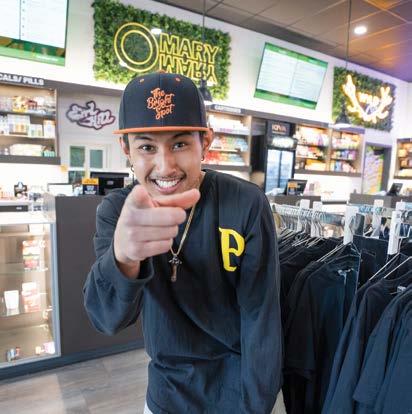


This dude spends a lot of time training in Muay Thai as a respectful student of martial arts. He’s also a creative who plays jazz instruments like guitar, drums and standup bass (and even sings a little, too). Follow him on Instagram @canna_pino.
SO, YOU’VE GOT A GOOD REP, WHY DO YOU THINK THAT IS? I don’t know how that reputation came about, but it all comes to being genuine as a budtender and a human being. To be honest, the way I think about it, I’m just blessed.
WELL, NEIL FROM BOSKY AND GISEL FROM CAM REFERRED YOU TO BE CHOSEN AS OUR BUDTENDER OF THE MONTH, SO YOU’RE DOING SOMETHING RIGHT! I truly believe that I can convey just enough knowledge to someone to where they can see the positive side of Cannabis instead of the stigmatized version. That’s how I approach a customer. If I’m talking to someone in the industry, I’m all ears and down to listen and learn. I don’t know everything, but my respect for the plant comes through.
WHERE DID YOU GROW UP AND WHAT WAS YOUR OPINION OF CANNABIS? I grew up in the Philippines and moved here at the age of 12. Being from another country, I kind of bought into the narrative of how it was as harmful as cocaine. But once I got here, I learned at the age of 16 that my older sister was using it recreationally. And she’s a good person, so it changed my perspective, and I grew to understand it.
WHERE DO YOU SEE YOURSELF IN 30 YEARS? WILL YOU STILL BE IN THE GAME? I see myself as a humble person with a farm of a bunch of plants that I’m tending and a bunch of ducks. I like ducks. Maybe I’m making my own genetics. Maybe I’m innovating a new way of growing, who knows? I just want to spread the good word of Cannabis to the people. And I would also like to say that I dedicate all my success to my late father Kelly Sicangco.

IF YOU’RE FILIPINO, I’LL BET YOUR MOM MAKES A FIRE ADOBO. That is very true, that is very true. Unbeaten. And if someone disagrees, it’s probably because their mom makes one too. (laughs)

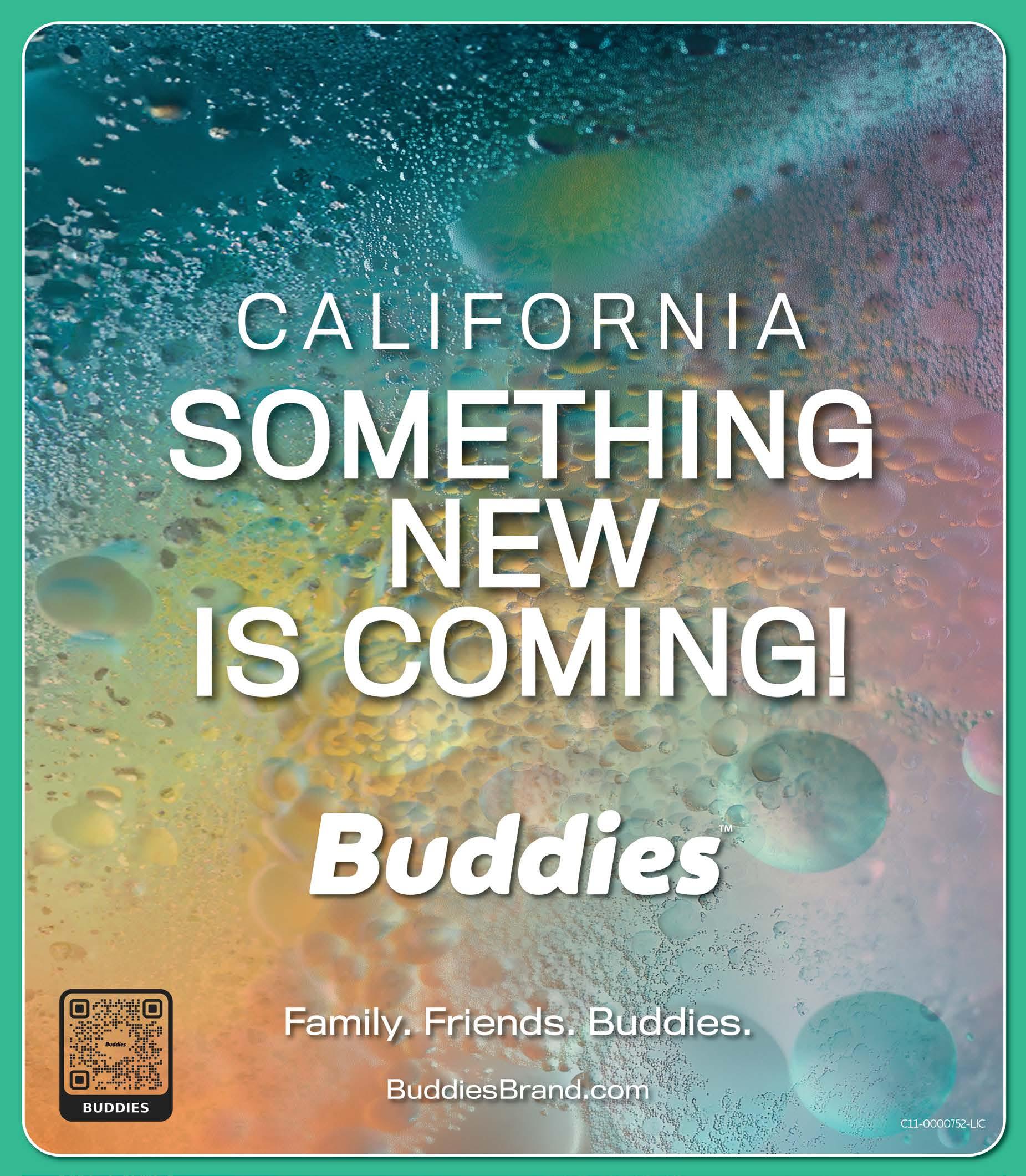



When the construction industry saw a significant dip after the real estate crash over a decade ago, professional contractor James Alves and and his wife, Amy, looked toward the Cannabis biz for their next venture. Starting with a collective, they then bought a farm, Humboldt AF Cannabis, and opened a couple delivery services, Humboldt’s Magic Bus and Chico Magic Bus. But like most enterprises in this unpredictable industry, they had to close the doors and re-evaluate. They transitioned into the retail world, cranking out the build and opening their cool Eureka location in 2020, followed by this shop in 2023, where they’ve found a permanent home.
A Cannabis retail shop should have a vibe, so they took inspiration from one of their favorite network shows, “Bar Rescue,” to create an intuitive look from a customer perspective. The result is what you see now: slat boards with vibrant colors and floating lights from the ceiling. It’s all about the feels here, with a clean and classy place to get your goodies. Outside you’ll bask in a courtyard lounge where townspeople are encouraged to hang with friends. With the covered gazebos and fireplaces accentuated by a built-in rock waterfall, it’s a great place to commune before a walk at the local Arcata Marsh.
For those who grew up here, you’ll remember this used to be the V&N Burger Bar. Instead of getting your grub, now you get a dub. This crew is also involved in helping the local youth by donating to different parks and recreation programs, including the FFA, which helps kids further their education in farming and agriculture.







Willow Creekside Afghani - Travis
Willow Creekside Wedding Cake - Katie

Fig Farm Holy Moly! - Dustin
Widowmaker Black Cherry Gelato - Ashleigh
Baby Jetter Blue Berry Kush - Melissa
Papa’s Herb Strawberry Cheesecake - Julia
Halara Diamond Sauce Purple Punch - Colin
Almora Farm Live Resin Badder Ice Cream Cake - Colton
Nasha Green Unpressed Hash Modified Sunset - Jarrett
Humboldt’s Premium Diamonds - Sour Afghani
Heavy Hitters Cherry Lights Out - Leslie ST IDES Drink Georgia Peach - Gregg
Space Gem Sweet - Brittan
Surplus Shots Tropical Trip - Justin
460 I St., Arcata, CA
Humboldtspremium.com
@humboldtspremium420
(707) 630-4098 | 9 AM - 9 PM
2nd Location: 1131 Broadway, Eureka, CA | (707) 495-0506



A Southern California concentrate brand with multiple tiers and types for consumers to choose from, BEAR Labs produces vapes, live resins and rosin. They’ve been congratulated for seeking out flavors that aren’t easily found on shelves by working with smaller farms to lock in these varieties on a long-term basis and present them to dispensaries at a friendly price point.
TODAY we’re looking at one of BEAR’s top-level, Tier 1 rosins. The brand divides its cold cure hash into four distinct sections, which they say are all 90-120u. According to the company, each tier is marked off by how much rosin a strain produces, the rarity of the strain and the amount of flower produced from the harvest. So, if something is hard to get or grow, has a low return (Sour Bears washes at around 3%), and is super unique or flavorful, it reaches top-tier status.
We actually first discovered the magic of Sour Bears during the 2022 Hall of Flowers in Santa Rosa, California. Back then, the entire CA Leaf Magazine crew was impressed by how the rosin produced fruit notes that could shine through all that Sour in the mix. Almost three years later, Sour Bears has become a serious fan favorite among BEAR Labs smokers.
Sour Bears was washed from material taken from Booney Acres up in the Emerald Triangle. This is a multi-award-winning farm that has racked up over a dozen Emerald Cup wins, as well as accolades from the California State Fair Cannabis Awards. In fact, this strain won second place in Ice Water Hash at the 2024 Emerald Cup. Bred by Symbi-
otic Genetics out of Sacramento, Sour Bears builds on the popular strain Kombucha (a cross of Sour Diesel and Purple Punch F2), by adding a booster shot of sour with a Sour Diesel Bx3. Booney says they discovered the strain in 2001 after working with Kombucha No.6, which was hunted by the good people at Pure Melt.
BEAR Labs’ first-tier presentation of this strain has a wonderful color, like a pale, waxing yellow moon, and a fudge-like texture to the glazed candy shell over the rosin. For maximum flavor, we recommend giving this a little stir or some optional badder-tech (exerting a little pressure to push the rosin together, then kneading lightly over the surface). Much like the first time we tried this one, the flavor strikes the palate with a strong Sour D edge before giving way to a more grape fruit snack and gas-flavored landscape on the exhale.
It seems like fans want to see more Sour terps on concentrate menus, and while this isn’t a new release for BEAR and Booney, the ongoing success of this flavor at a time when people are always looking for the next new thing speaks volumes.
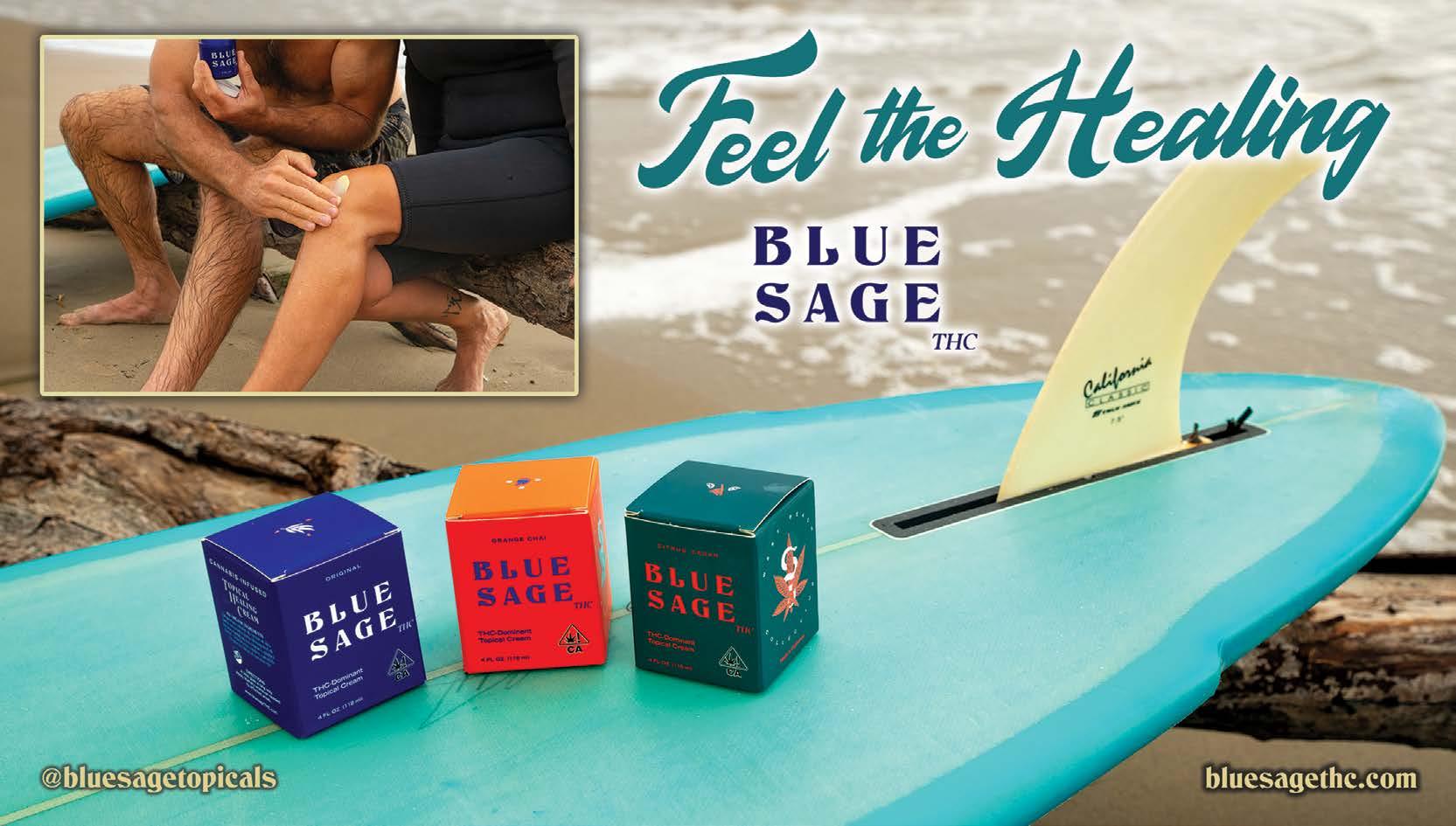




























































































































































































































































































SOG Army is a Santa Rosa-based brand with a reputation in the industry for producing super flavorful Cannabis. SOG stands for Sea of Green, a method of cultivating indoor Cannabis designed to increase yield and shorten the time between harvests. In a Sea of Green garden, plants are packed tightly together to create a low, dense canopy that stretches across the room like the even surface of a calm ocean.
AVAILABLE IN CALIFORNIA and now Mississippi, SOG Army has already won an award for best indica within a year of launching out of state. Its lineup of flavors is hunted from the work of well-known breeders like Symbiotic Genetics, Wyeast Farms, Mosca Negra and the mysterious stranger behind their popular Blumosa strain. BJ, who started SOG Army, told us that while this strain is a massive favorite among Californi a smokers, it’s already a big hit with the Southern crowd as well.
Pink Zaza is one of SOG’s Clydesdales. A Crane City Cannabis creation, the shorthand on its lineage is ZR3 x Dweebz, which BJ told us means (Runtz x Z Cubed) x (Runtz x It’s Fire). That last strain in there you might not be familiar with — It’s Fire breaks down further as ITZ x Fire As Fuck, which is Gelato x Cookies crossed with Gelato 45 x Jet Fuel Gelato. While it’s a mouthful, listening to the breakdown reveals all that Gelato and Zkittlez influence tumbling around like shoes in a dryer.
The look is like some Z in Super Saiyan mode, bright green and sparkly with distinctive orange hairs, but it’s that nostril-grabbing, almost astringent, citrusy smell that rules the roost here. Considering we’re living in a time where curing is often more of an afterthought than a goal for the retail market, this had a beautifully developed aroma, yet still a bit of squish to the nugs.
The flavor closely mirrors the smell — bright with a flash of sweetness before a rush of that Zkittlez-y flavor that dominates the field until the backend where you can still pick up that Gelato influence from the earthy, creamy exhale. You honestly cannot help but be impressed with the strength of the aroma of this strain. Every time I opened the jar I was hit with a grin by just how loud this weed is.
SOG Army has some really big contenders on the roster right now. Their Grape Gas is a huge hit at stores, as is their Blue Nerds. So what made this strain a clear winner? The answer lies in that startlingly clear translation of flavor. Regardless of whether you smoke it from a joint, blunt, pipe or bong, Pink Zaza tastes just as good as it smells. Plus, it has a wonderfully uplifting-ish effect that’s nicely paired with good weather and a lazy Sunday.


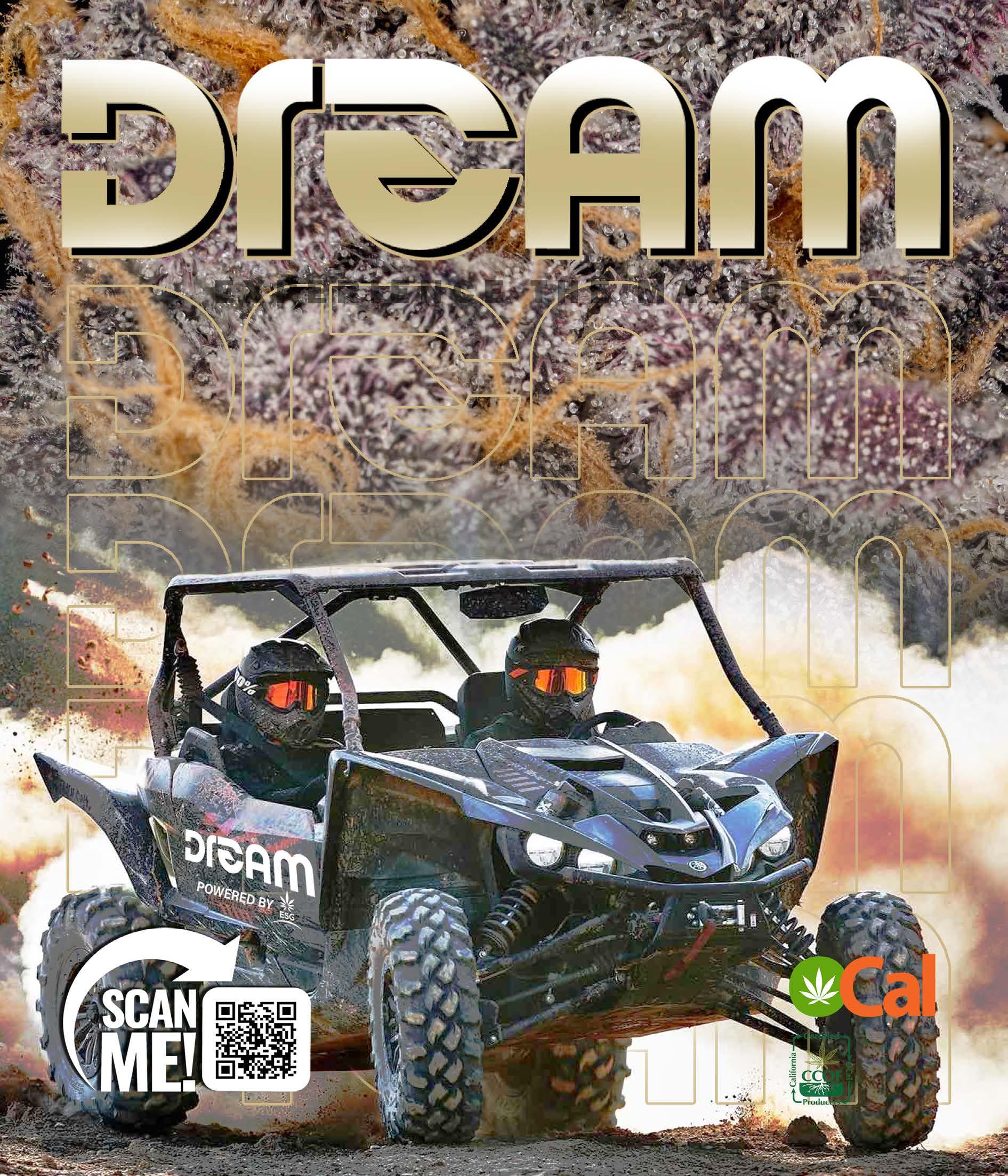





Gary Payton is objectively one of the greatest point guards in the history of basketball. For proof, let’s review the tape: NBA Championship? Check. Olympic Gold Medal? Got it. NBA All-Star? Payton made the All-Defensive First Team nine times, tied for the record with Michael Jordan, Kevin Garnett and Kobe Bryant. On the court, no one can challenge his legacy. But that’s all in the past. Now, the man they call “The Glove” is racking up assists in the Cannabis space, helping patients and athletes find relief with his new brand, Greater Purpose. The LEAF caught up with Payton courtside at a park in Los Angeles to learn more about his new moves.
Even if you’ve never watched basketball, you probably know Payton’s name from the famed Cookies strain named after him. Bred by Bay Area legend Kenny “Powerzzzup” Powers, the GP strain was named and released by Berner in collaboration with Payton.
“One of my guys came to me and said, ‘You know, they got a strain with your name,’” Payton said. “I said, ‘Who does?’ And it was a guy named Berner. I said, ‘We’re gonna have to meet with him.’”
The strain originally was called “Strain 20,” its ID number in Powers’ pheno hunt. Berner and the Cookies crew saw the correlation with the legendary Oakland-born baller Payton, whose jersey number was 20.

“He was like, ‘You are an OG here in Oakland, and we’re proud of you, we want to name it after you,’” Payton said, recounting his initial conversation with Berner. “So I said, ‘OK, cool.’”
Payton picked the likeness for the bags and helped with the creative decisions, and one of the most popular strains in Cookies’ history was born.
Ironically, considering the legendary status swiftly earned by his namesake strain, Payton had never been a weed smoker himself.
“When I was in the NBA, it wasn’t like that,” Payton said. “People didn’t know what Cannabis did for you. … Nowadays, it’s different, because a lot of people use Cannabis products, and they understand what it’s doing and helping. When I was playing, we didn’t have this much knowledge, so we didn’t believe in Cannabis. We didn’t know much about it.”
In the years since his career on the court, there’s been a tectonic shift in the attitude toward Cannabis in athletics. The plant’s recovery benefits have been well documented, and NBA commissioner Adam Silver lifted the league’s ban on Cannabis usage.

“Adam Silver knows that 80 to 90 percent of his players smoke marijuana,” Payton said. “So why fight it? You’re gonna catch ’em, and what if you catch the whole 80-90? You’re not gonna have an NBA.”
Not only is it in the league’s best interests to allow its players to make their own decisions about Cannabis, Payton says it’s in the players’ best interests, as well.
“With marijuana, they get a sense of relief,” he said. “They can mellow out and be calm. Most of these kids are smoking weed and playing PlayStation. They’re having a good time and being mellow. I’d rather have them like that than have them out on the streets, drunk, killing people.”
Payton doesn’t know how fast the rest of the professional sports community will catch on, but he loves that the NBA is leading the charge.
“I don’t know what baseball and football are gonna do,” he said. “I don’t think they trust it, and I don’t think the commissioners know much about it. But I think Adam Silver is a players’ Commissioner, and he understands what’s going on.”
While the world has experienced a sea change in its attitude toward Cannabis, Payton himself felt a personal perspective shift about the power of the plant that set him on a new path.
“It started because my mother — she's dying from cancer,” Payton said. “I gave her some gummies, I gave her some marijuana and some rubs that would keep her from aching and pain. During that time, we knew we couldn’t stop the cancer. It was terminal.”
The infused products Payton provided helped ease his mother’s suffering and brought her a modicum of normalcy during her struggle.
“I decided to do it for a greater purpose," he said.
Greater Purpose became his mantra, his mission, and then became the name of his own therapeutic Cannabis brand. Payton founded the company with industry operators Green Label Rx to bring safe and clean relief to patients and athletes. They are releasing a lineup of roll-on balms and gummies to start.
“It’s a Greater Purpose to help people who are ailing,” he said, “to get them off medications, to have a better life.”
The products are aimed squarely at symptom relief, and Payton recommends them for use anytime you might experience swelling, muscle pain or stiffness, especially before and after workouts.
“I use it every day I get up,” he said. “If I’m feeling achy, I’m getting close to 60, so I’m like, ‘Yo, I gotta use it, too.’ It makes me feel better, and it’s safe. I don’t feel high, I don’t feel drowsy, I feel great.” @GARY.PAYTON.20
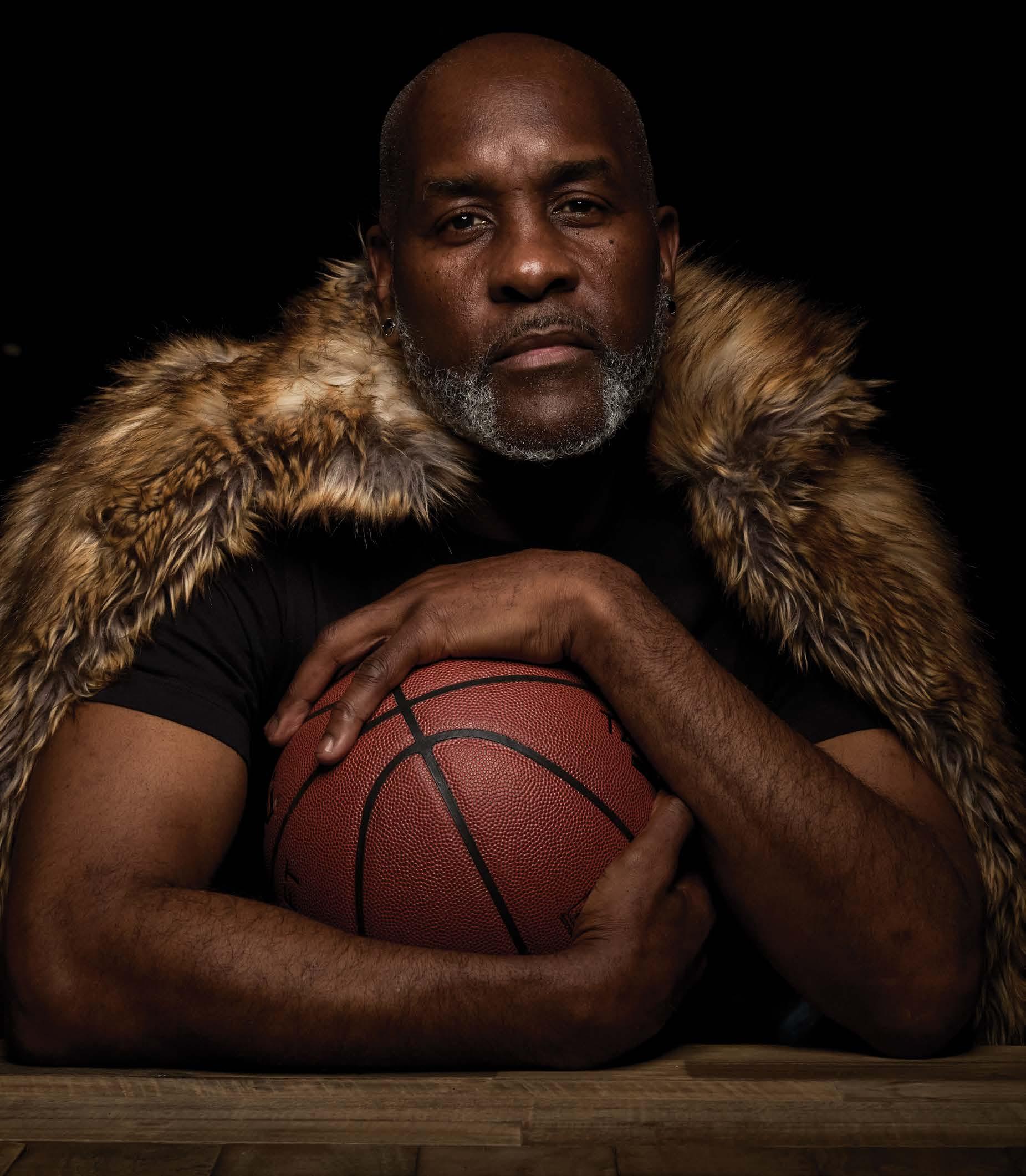
" IT’S A GREATER PURPOSE TO HELP PEOPLE WHO ARE AILING, TO GET THEM OFF MEDICATIONS, TO HAVE A BETTER LIFE."

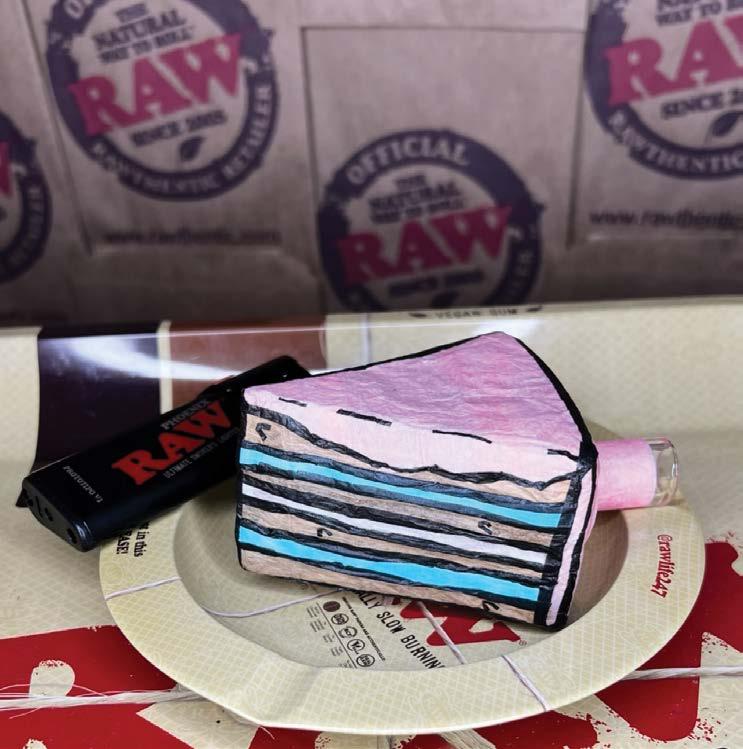



Joint rolling has enjoyed a brilliant renaissance as of late. With waves of professional rollers in both the traditional and recreational markets, and a growing desire for hash donuts from consumers at events, there’s an accessible, connoisseur-level experience for almost every shopper. These artisans are masters with rolling papers and an adhesive pen. But what about the people who prefer to create sculpture?
There’s no doubt the bar for a wellrolled joint is set high, but we want to talk about those out-of-this-world, intricate, pinata-like joints — the kind that look like miniature super yachts with little people on the bow and a tiny speedboat at the back that you inhale through.
Our previous article on “The Art Of The Roll” explored this world with superstars like Grasshoppa, Tony Greenhands and June Da Goon. However, this time we’re taking a deeper dive into the world of rolling paper mache to ask: What does it take to create these masterpieces? To help, we enlisted the help of MJ Mazzei, a Los Angeles-based artist who fashions flowers into incredible forms like speedboats, dinosaur skulls, Air Jordans and even color portraits. Mazzei, a full-time roller and content creator, started his journey into this kind of tech in 2022. Back then, he says, there really wasn’t much in


the way of education despite it already being pioneered for years by people like Weavers and Tony Greenhands. Studying their online videos and spending hours practicing, he began to outline the art form for himself.
WHAT
According to Mazzei, there are three major techniques. The first is the traditional ones we see in how-to books, like the cross joint or the windmill. They take skill, but as he points out, there’s a ceiling for how elaborate you can get. Next there’s the sculpting method, where you take pre-rolled pieces and adhere them together, adding and subtracting segments until the whole thing becomes a single, smokeable piece. You can see this style in the work of LGLAWEED, Eclipse, and Lydia The Doobie Duchess.
Finally there’s the mold and form method. With this you can use a mold as a framework to paper over, then cut away the paper from the frame and fill it with weed before sealing it back up.
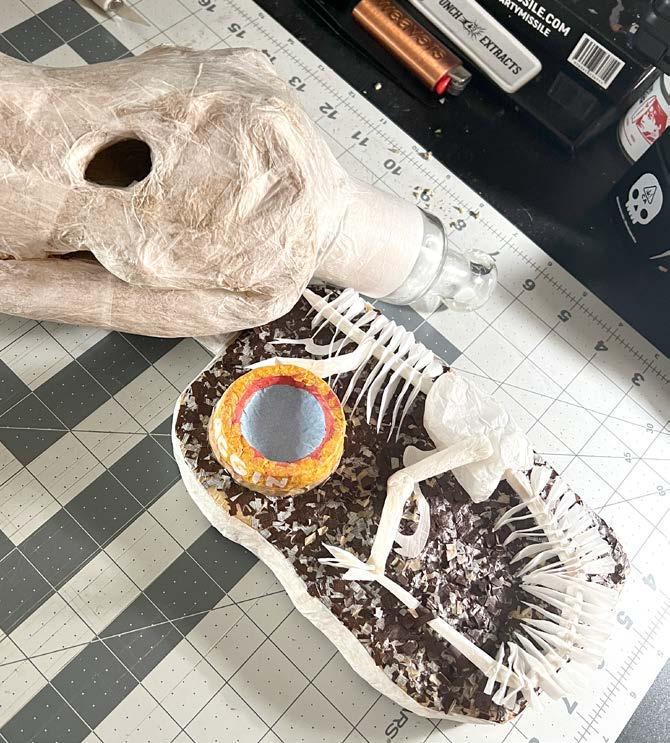
Alternatively, using a form, you can layer paper around that until you create a sort of pocket around the shape that can be filled up and sealed like an empanada.
This is how Mazzei says he works most, and he even helped design a mold kit for first-timers so they can try the process out in less than an hour. He says regardless of which of the three you choose, there’s still the time involved in grinding all the weed up. Recently, he spent six hours prepping 1 1/2 pounds for a Basquiat-inspired piece. (above)

HOW LONG ONE OF
TAKES TO CREATE REALLY DEPENDS ON THE SIZE OF THE PROJECT JUST AS MUCH AS THE AMOUNT OF WEED YOU’RE STICKING INSIDE OF IT.

How long one of these smokeable sculptures takes to create really depends on the size of the project just as much as the amount of weed you’re sticking inside of it. Mazzei said hours can be spent on shading and color (we’re quick to forget that rolling papers come in a pretty small color palette). Layering them to produce different hues is something that takes a lot of time to perfect. Some of his portraits took 30 to 40 hours, but after all the practice, he says object-based pieces take around a day to complete.

When asked if there’s any one he’s particularly proud of, he brought up two different pieces. The first was a Bosky collab for the Freedom Grow Gallery at Hall of Flowers this year.
The two hands lighting a joint, one skeleton and one flesh and bone, represented the struggle Cannabis prisoners face in the fight for their freedom. He meant this to evoke conversation in the way we expect of traditional gallery art. The second was a tribute to Basquiat he created for the Terp Basel event. Working in a medium that’s often overshadowed by brand marketing, that piece represented a chance to make an artistic statement and create something that wows the crowd at a sesh, as well as in a museum.


but it mostly comes down to sound engineering. “Corners are particularly hard to get burning properly,” he said. “The airflow wants to go to the inner side and will burn faster than the outside.” Mazzei points to his T. rex skull, which had so many angles that the whole thing burned from the inside out, giving the unexpected effect of flaming eyes. Another important factor he brought up is that, as the joint burns, the flower below is dehydrating and therefore shrinking. If the flower isn’t tightly pressed or the joint isn’t well-engineered, the second half can become loose, causing the cherry to fall out.
For anyone interested in learning more, Mazzei has created the World Series of Rolling to host competitions, skill shares and a community space for anyone looking to practice this art form.
We asked for some pointers on making molded joints, and he said there are a few important things to keep in mind,
“No one person can overcome the shadowban,” he points out. “This creates a platform where the art can be visible.” You can also purchase one of the rocket mold kits he helped create online and then try it out with your friends.
What’s great about Mazzei is his appreciation for this as more than a technique or art that’s unique to our community. “I see this as having three forms,” he told us.
“Physical, like traditional art; digital, for its ability to quickly deliver a message through social media networks; and most importantly, experiential, because we’re consuming this to create memories.”
And he’s right, you never forget the time you and your friends smoked out of a shoe.

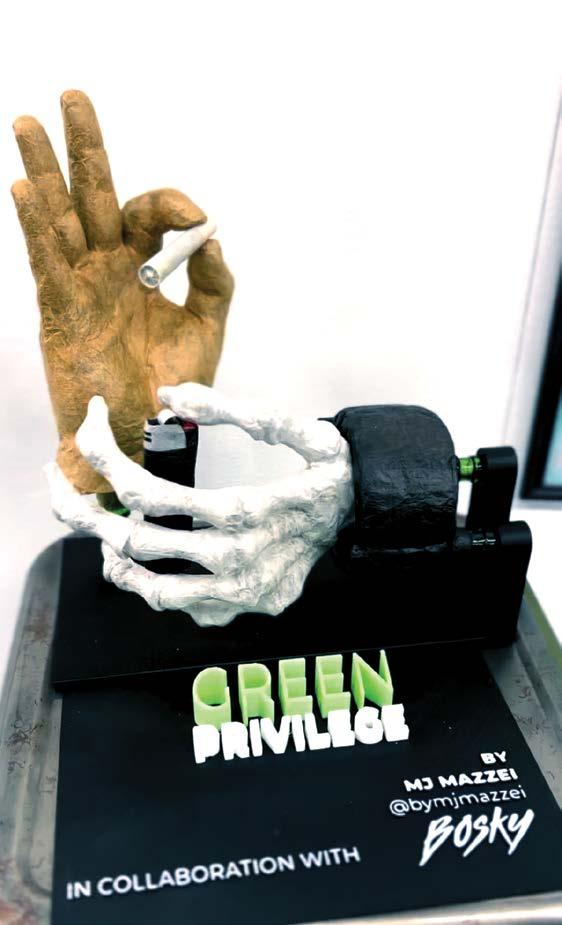

San Francisco’s Haight-Ashbury neighborhood in the late 1960s was ground zero for the birth of the counterculture in America — manifesting the fashion, music, and mindset that defined a generation. Experimental, socially conscious jam bands like Jefferson Airplane, Big Brother and the Holding Company, Quicksilver Messenger Service, Moby Grape and, of course, the Grateful Dead provided the soundtrack to the dawning hippie revolution. It was at their concerts, in legendary Bay Area venues like the Fillmore West and the Avalon Ballroom, that thousands of young people from across the country first experimented with mind-altering substances like marijuana, LSD, mushrooms and peyote — opening their minds to the universe and losing themselves within the music.

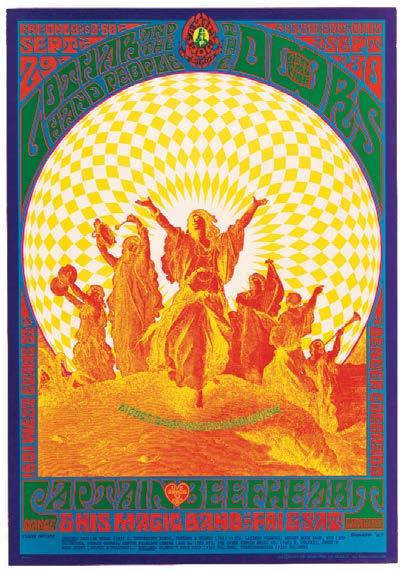
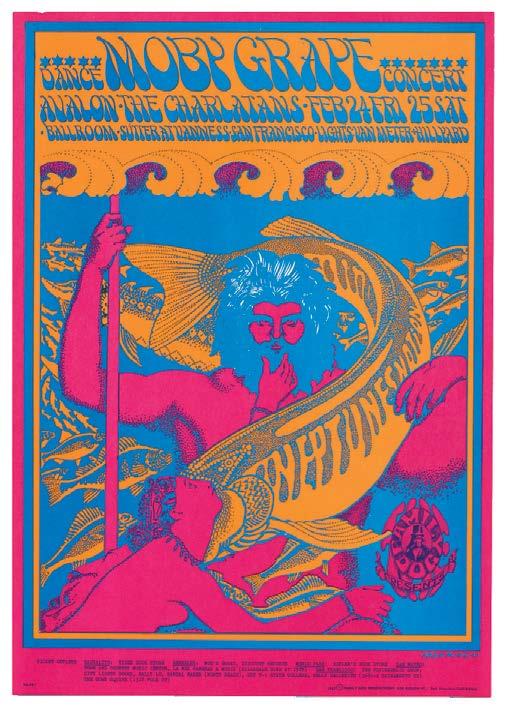
So naturally, the advertisements for those shows had to be just as psychedelic. To meet that need, a new breed of underground artists emerged to create a new pop culture art form: the rock poster. Now the Portland Art Museum is revisiting the work of these incredible artists with a groovy new exhibit entitled “Psychedelic Rock Posters and Fashion of the 1960s.”
The exhibit features nearly 200 posters from around a dozen different artists, including the genre’s legendary “big five” — Rick Griffin, Alton Kelley, Victor Moscoso, Stanley Mouse and Wes Wilson. Most of these entheogen-inspired handbills feature vivid colors that vibrate when juxtaposed against one another, creating optical illusions of movement (especially when viewed while tripping), and wavy, hand-drawn lettering (inspired by turn-of-the-century European art) that is often nearly illegible — specifically designed that way to keep the “squares” away.
“The artists deliberately made them difficult to read, and I think part of that was so they could appeal to this subculture of folks who would stand there and stare at that poster as long as it took to figure it out,”
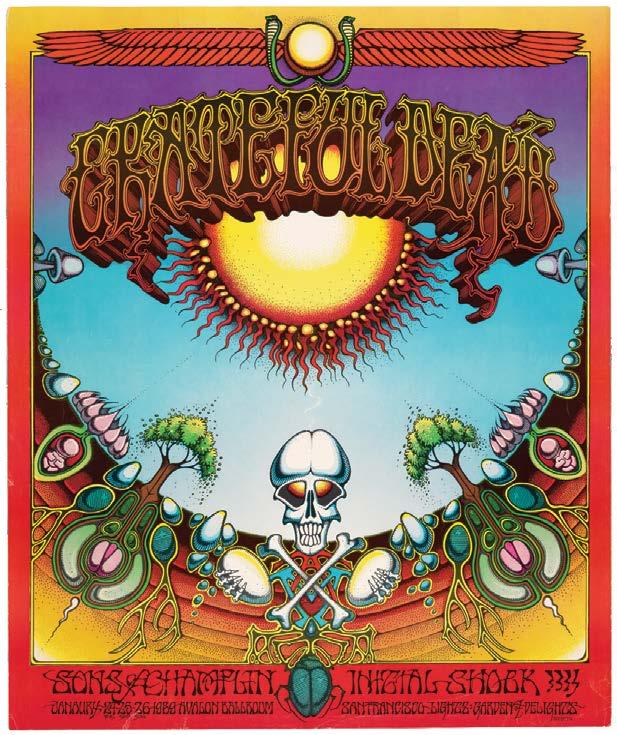


notes the exhibit’s curator, Mary Weaver Chapin, Ph.D. “Not surprisingly, the people who commissioned the posters did not like that at all. In fact, there's a famous exchange in which one of the producers, Bill Graham, says to his artist, Wes Wilson, ‘These are terrible — nobody can read them!’ And the artist replies, ‘Yeah, man, that's the point!’”
The vast majority of the posters on display were donated to the museum by local artist Gary Westford, who began collecting them while attending San Francisco State College from 1968 to 1971. In addition to the art, the exhibit also features a selection of fashions from the era and a psychedelic light show by OG visual artist Bill Ham, who provided the visuals for many of the old “Family Dog” concerts at the Avalon that these posters were promoting.
The “Psychedelic Rock Posters and Fashion of the 1960s” exhibit runs until June 25, so if you’re in the area and feel like experiencing a far-out flashback, take a hit of your preferred vibe enhancer and head on down… We think you’ll really dig it.
PORTLANDARTMUSEUM.ORG @PORTLANDARTMUSEUM


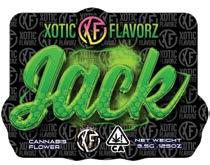



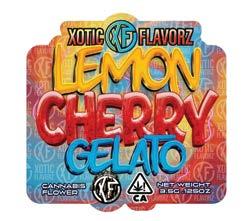
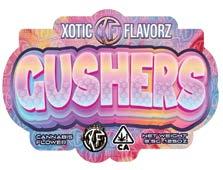











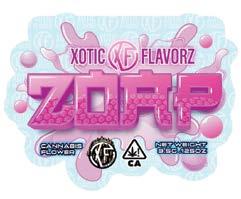
















Guess who’s back, back again?
Captured by federal law enforcement in 1986, Barry “Flash” Foy was at the center of the largest drug investigation in U.S. history at the time. Foy was on the run for two years before authorities cuffed him at New York’s LaGuardia Airport in front of his wife and two kids. The “marijuana kingpin” from South Carolina was the poster child for the type of corruption then-President Ronald Reagan railed against as part of a War on Drugs campaign. After smuggling what amounts to $1.8 billion worth of marijuana and hashish in today’s dollars, Foy and his partner Les Riley earned the moniker “The Gentlemen Smugglers” — a nod to their college education and aversion to violence. The kingpins headlined a group of more than 100 men and women arrested on behalf of Reagan’s law-and-order pursuit. Foy was sentenced to serve 11 years in the same Atlanta prison where Chicago gangster Al Capone previously resided.


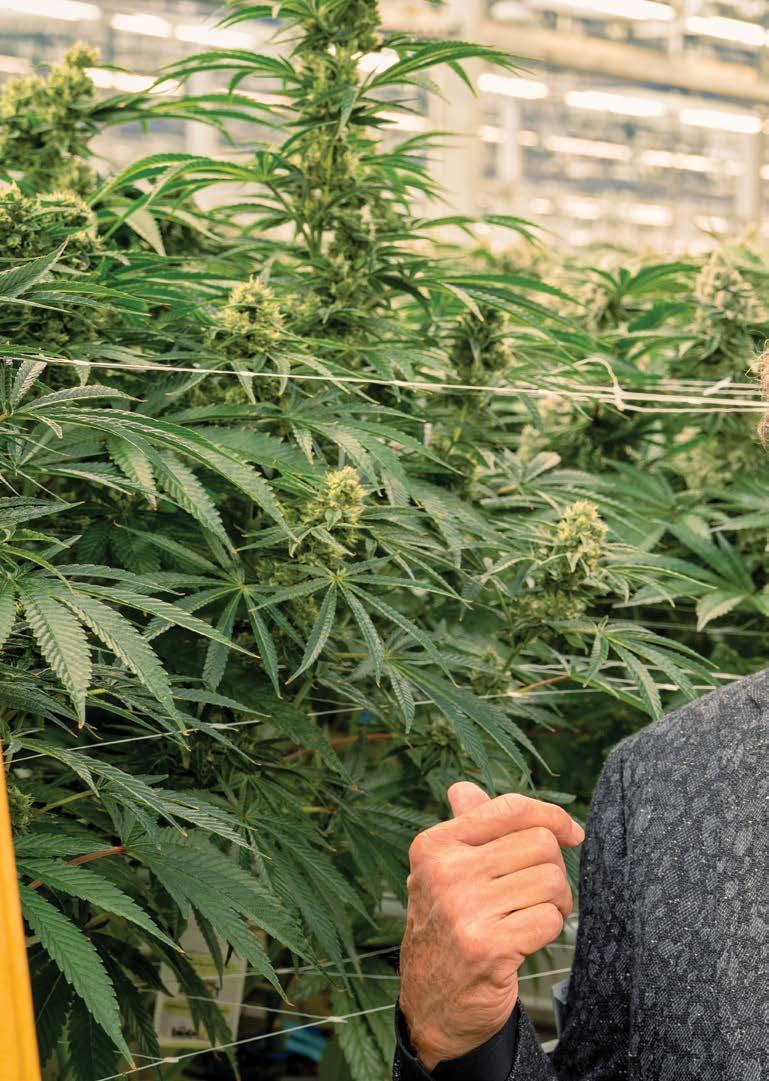




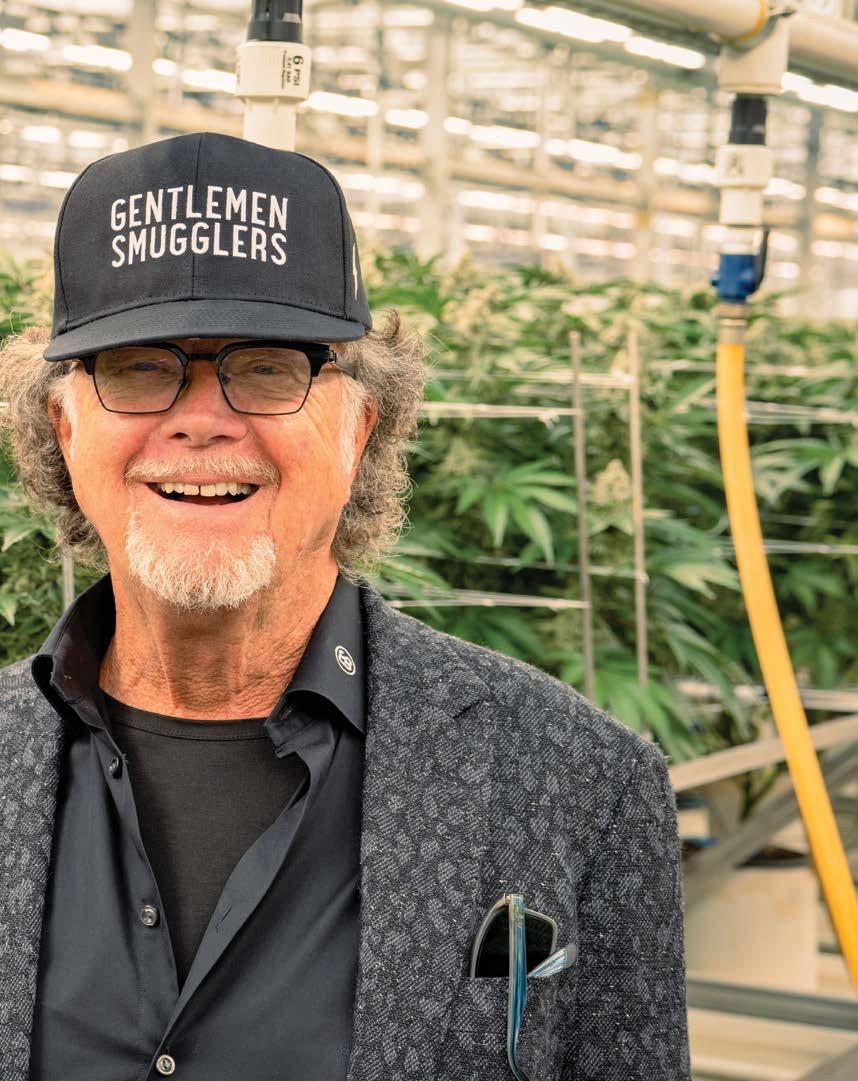

THOSE WERE THE GLORY DAYS OF CANNABIS, AND IN A VERY REAL WAY, WE WERE THE DISTRIBUTORS AND DISPENSARIES OF THAT TIME.
“I’M PRETTY SURE I stayed in the same cell,” said the 73-yearold from Columbia, noting that a carving of Capone’s name could be found on his bunk.
Upon release, Foy figured it was best to stay on the straight and narrow. The Cannabis game had changed, he recalls, with “California coming online” and Colorado’s approval “just around the corner.”
He, too, was different. A decade had passed with him removed from family, friends and society. “It’s not something anyone really wants to go through,” he said. “I just tried to stay busy, keep going in the right direction and be positive.”
Embroiled in the War on Drugs and imprisoned for years, Barry Foy has emerged into the legal Cannabis world with a truly unique story and perspective.
beautiful women, all while owning big houses and driving expensive cars. He was known to have no fewer than four Porsches at his disposal at any time.
“Those were the glory days of Cannabis, and in a very real way, we were the distributors and dispensaries of that time,” he said.
But the fear of recidivism was real. Despite fond memories of the “glory days,” Foy had no intention of returning to prison. So he chose to settle into a joy found prior to incarceration: restaurant ownership. Foy’s career in Cannabis was over and he was OK with that.
Or so he thought.
As years passed and he prided himself on feeding hungry restaurant patrons, the country began to embrace Cannabis, with legalization efforts spreading across the U.S. Meanwhile, The Gentlemen Smugglers stayed relevant in a tell-all book, “Jackpot,” which was released in 2011, four years after the last fugitive was arrested. The memoir caught the eye of film editor and artist Kevin Harrison, who was put in touch with Foy in hopes of making a documentary.
“‘Come see the most eloquent kingpin you’ll ever meet!’” laughed Harrison. “That’s how I was pitched to come meet Barry and they weren’t kidding. He told me his story and it was so compelling, I thought, we’ve got to bring this to the big screen. But the more we talked, we began to ask ourselves, ‘How do we launch a brand?’”
The process of creating a brand took Foy and Harrison years to create, calling it an organic process.
“It didn’t happen overnight,” Harrison said.
crazy journey to get to where we are today,” smiled Foy.
The Gentlemen Smugglers have made quick work, expanding into 52 dispensaries in Massachusetts, as well as an additional 23 in New Mexico. Just last month, the brand successfully extended its reach into a dozen Maryland dispensaries, pairing with SunMed Growers to span coastwards to Ocean City and as far west as Frederick. Gentlemen Smugglers will also make an appearance in New York dispensaries come December.
“It feels good writing a new chapter,” said Foy, likening SunMed’s large-scale operation to the “Disney of all facilities.” “They’re great people to work with — very organized and top of the line from a wellness aspect.”
Foy feels good with the proverbial pen in his hand, he said. A decade ago, the best-selling book “Jackpot” provided Americans with a not-sofriendly look into Foy — a “kingpin” who former colleagues referred to as, “impetuous, taking too many risks and having little regard for others’ wellbeing.” This time around, he’s providing patrons with access to top-tier medical Cannabis at an affordable price. A percentage of the profits covering four states and over 70 dispensaries goes directly to the Last Prisoner Project.
“That’s something that is very special to me,” Foy said of the nonprofit dedicated to reforming the criminal justice system in America. “I feel a kinship to what they do on a day-today basis.”
A handful of Foy’s contributions come from Albuquerque, home of the legendary Walter White. White was the fictional antihero of the AMC hit television series Breaking Bad that features a high school chemistry teacher who transitions into a drug lord. A “big fan” of the show, Foy was asked if he, a convicted felon now legally aiding medical patients, could be accused of...Breaking Good?
Foy lived fast in his 20s, smoking the finest herb, throwing fancy parties and routinely courting
In September 2022, they celebrated alongside their inaugural partners, a Massachusetts-based company Green Meadows, as their first products came to market. Nearly four decades after being shut down by the U.S. government, the Gentlemen Smugglers were back in business.
“I LOVE THAT!” he exclaimed.
- BARRY FOY GENTLEMENSMUGGLERS.COM
“To think where we were and how far this thing has come… it’s been a



Over the years, those instantly recognizable BIC disposable lighters have become part of a Cannabis smoker’s essentials. But have you ever loaned somebody your lighter only to have them recoil in fear and horror? Just like athletes and gamblers, stoners are a superstitious group, and there’s a longstanding belief that using a white BIC lighter will bring bad luck. Even those who say they don’t believe in the curse will also admit they don’t buy any white lighters when they pick up a new one. This month in Herb ‘n’ Legends, we look at this particular stoner belief, examine how this tale got started and ask whether there’s any truth to it.
THERE ARE TWO main reasons why white lighters have gotten such a bad reputation with weed smokers.
The first is a reference to the infamous 27 Club — an illustrious lineup including Jimi Hendrix, Amy Winehouse, Jim Morrison and Kurt Cobain — who were all immensely talented stars who died at the young age of 27.
Rumors claim they were in possession of a white BIC lighter when they passed.
However, the French company has stated it didn’t produce disposable lighters until 1973, a full three years after Hendrix died. Morrison passed while naked in the bath, and photos released by the Seattle Police Department show that while there were two BIC lighters present at the scene of the Cobain tragedy, neither was white.
The second reason these items are said to be cursed is their ability to reveal the owner’s habits. According to the story, back in the ’70s, there were only two colors available: black or white.
When you went to use your lighter to tamp down a bowl or knock out some ash, the white lighters would be left with telltale marks that police would use to bust people. The problem with this story is that the product first launched with five color options. Early marketing even shows a hand holding one in green.
As for resin marks on a white lighter being the giveaway for police, regardless of what color, the bottoms are always white. Tamping your bowl with any of them, white, yellow or with a unicorn sticker, will leave behind residue.
So is there a curse on this particular kind of BIC or on white lighters in general? There’s always going to be power in superstition, and the brain just loves to play with that power. But if we’re basing it on traditional evidence, then we have to say no. While there might be other tales out there — like Bigfoot only stealing white lighters or a white lighter meaning your next harvest will have mold — we’re going to consider this case closed.


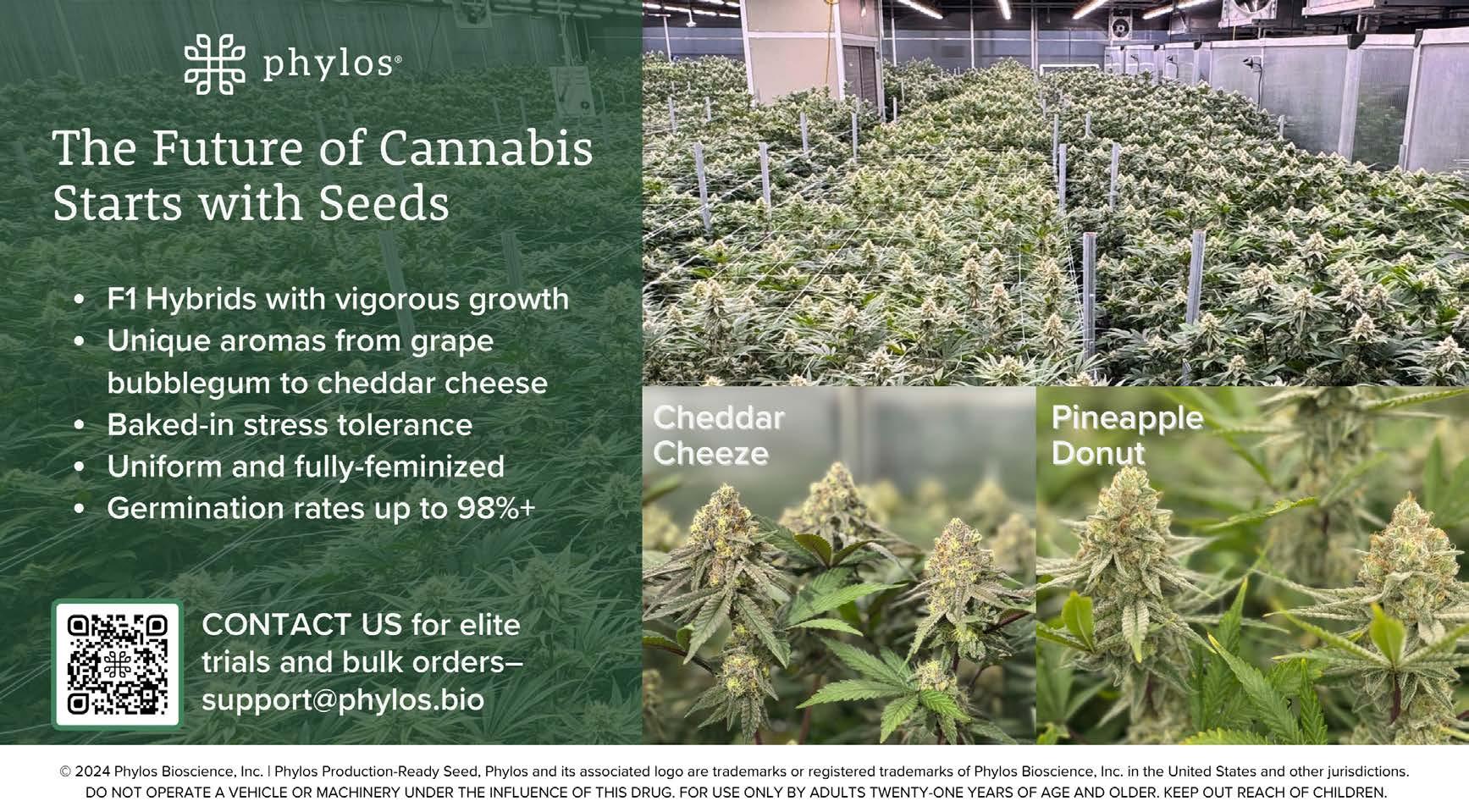




JD Maplesden’s journey as an artist is a story of passion, growth and relentless pursuit of mastery in a craft that combines fire, glass and imagination. His path was not a straight line, but rather a mosaic of experiences, challenges and breakthroughs that have shaped him into one of the most innovative figures in the world of contemporary glass art.

STARTING OUT IN 2001, JD found himself working in between Spokane and Humboldt during the early years of his career. His time there was marked by experimentation and growth, learning the ropes of flameworking through the limited classes that were available. Then in 2007 he had the opportunity to TA for Chris Roesinger at the Revere Glass School. This same year he gained his Color Certification through a class at Glass Alchemy. His scientific dive into colored glass helped him realize the impact it could have on his works. His desire to innovate led him to experiment with fume work, stepping away from the use of vibrant colors and focusing on more subtle, refined techniques. This was just the beginning of his exploration into the art of glass.
From 2008 to 2009, JD helped to build Montage in Spokane, a collaborative space that would later become a hub for the local glass blowing community. He didn’t just learn; he taught others, sharing his knowledge and encouraging the next generation of artists. It was here that JD’s love for teaching truly took root.
Over the years, he has continued to teach workshops, including an upcoming one in March 2025 on mixed media in Denver (see his page for details). His passion for teaching was deeply ingrained in his philosophy, believing that sharing knowledge and collaboration were essential to advancing the craft. By the end of 2009, JD moved to Seattle, where he worked for SwissPerc and learned the intricacies of the lathe. He immersed himself in the opensource learning environment, testing his skills and

putting his unique spin on pieces. In 2011, he relocated to Nebula, Ivan’s studio in Bellingham, where he continued his craft while continuing to build relationships on the East Coast.
It wasn’t long before Scott Deppe of Mothership Glass, a fellow artist and mentor, recognized JD’s potential and brought him onto his team.
This ultimately led to JD’s role in manufacturing the groundbreaking 2012 “Fab Egg,” a project that won Most Innovative Product at the 2013 American Glass Expo. Scott brought JD on stage and gave him recognition and acknowledgement of his integral part of the process.
JD’s breakthrough moment came in 2014 when he launched his solo career, posting his first "Solo Wormhole," which sold almost immediately.
From there his focus on creating wormholes as a canvas for collaborations with other artists quickly earned him a reputation as one of the most innovative glassblowers of his generation.

From 2014 to 2017, JD’s career soared as he traveled across the country and beyond, teaching classes and presenting his work at prestigious events like the Pipe Classic, DFO, and various gallery openings. His 2015 show at Emerald Gallery on the California coast, “An Exploration of the Wormhole,” was a massive success, featuring 46 pieces and collaborations with 43 artists. Even as his fame grew, JD remained grounded. He continued to travel — teaching and learning — working with friends and colleagues in studios around the world, including a trip to Colombia in 2017 where he helped establish the first public glass blowing demos in the country. Despite an injury setback in 2017, JD’s resilience
“His passion for teaching was deeply ingrained in his philosophy, believing that sharing knowledge and collaboration were essential to advancing the craft.”

shone through as he focused his energy on "Vagabond," a film that showcased the artistic process behind his work. This film debuted at dozens of theaters and glass events across the country.
By 2019, JD was back at the torch, traveling and visiting friends but focusing more on his art than the grind of the industry. He relocated to Eugene in 2020 and continued to work on his passion during the lockdown.
By 2023, JD’s journey had come full circle. He returned to Europe to do demos in Switzerland and Spain. That brings us back to today where JD still has his studio in Eugene, but his travels are taking hold again — you’ll find him all over the place in 2025. Keep an eye on his page and check out a live show or class if he’s in your neck of the woods.

JD Maplesden’s career is one of perseverance, growth and transformation. His work — whether through collaborations, solo pieces or workshops — continues to inspire a new generation of artists, leaving an indelible mark on the world of glass art.




The story of Cypress Hill begins in the early 1980s in the LA suburb of South Gate, where two Cuban-American teenagers named Senen Reyes and Louis Mario Freese first met while attending nearby Bell High School and forged a fateful friendship. Reyes reportedly gave Freese (five years his junior) his first joint when he was around 13, and the two became instant stoney homeys — cutting school, smoking “Buddha,” reading High Times and listening to Public Enemy records together. Adopting the MC monikers “Sen Dog” and “B-Real,” they dreamed of becoming famous rappers… but it wasn’t until after connecting with an Italian-American DJ from Queens, NY, named Lawrence “DJ Muggs” Muggerud in 1986 that their pipe dream began to come into focus.
Originally, it was Sen and his brother Sergio, aka Mellow Man Ace, who formed a group with Muggs called DVX (Devastating Vocal Excellence). But when Ace went solo, B-Real stepped up, prompting the group to change its name to Cypress Hill — inspired partly by a reference in the “Wild Style” movie soundtrack and partly by a street Sen lived on called Cypress Avenue. With Muggs as their DJ/producer, they began writing and recording songs, developing their own unique, Latin-infused hip-hop sound. Sen’s vocals were deep, raw and gruff, while B, on the other
hand, had a distinctively highpitched, nasal style. As for their lyrics, they were primarily inspired by two things: their hard times in the hood (both Sen and B had spent time gangbanging with the Bloods) and their love of weed.

“When we first started Cypress, we weren’t even writing about weed — it was Muggs that had the vision,” Sen told DJmag.com in 2021. “He told me one day, ‘You and B-Real need to be the Cheech and Chong of hip-hop. You guys are the two biggest stoners I know. You read High Times like it’s the Bible. You guys are great rappers, but you don’t have something that you’re known for. And it’s been under your nose the whole time!’”
The trio put together a six-track demo tape and began shopping it around. They received offers from a few labels but turned them down due to the censorship that would’ve been imposed on them.
“They thought we were good entertainers,” Sen told Medium in 2016. “They just … didn’t want us to rap about weed, didn’t want us to cuss in our songs, didn’t want us to use the word ‘nigga,’ didn’t want us to talk about violence…”
From Snoop and Dre, to Meth and Red, to Berner, Cudi and Khalifa — many rap icons have made Cannabis an integral part of their music and personas throughout the years. But when it comes to the true OGs of reefer rhymes, the musical godfathers of the modern marijuana movement, none can compare to the “Cheech and Chong of hip-hop,” Cypress Hill.
Ultimately, in 1990, they signed with Philadelphia-based Ruffhouse Records (a subsidiary of Columbia/Sony), which offered total creative freedom. This resulted in their 1991 self-titled debut — a groundbreaking album that combined Spanish slang and sirens with beats and melodies sampled from diverse genres, including rock, soul, jazz and funk. But the most distinctive aspect of the album was its heavy emphasis on marijuana. Not only did most of the songs have weed references, but three songs (“Light Another,” “Stoned is the Way of the Walk,” and “Something for the Blunted”) were dedicated entirely to getting high. They even adopted a skull with an inverted pot leaf as their logo, which is featured prominently on the cover. Surprisingly, rather than discouraging their pot proselytization, Sony actually leaned into it, running a full-page ad for the album on the back cover of the band’s beloved High Times (Dec. 1991). A few months later in the March 1992 issue, High Times bumped them up to the front cover, running a feature interview with them that included a photo


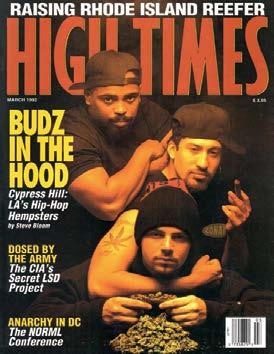

essay in the centerfold entitled “How to Roll a Blunt” — the first time blunts were discussed in the magazine.
Well received by fans and critics, Cypress Hill’s eponymous debut would eventually be certified double platinum, making them the first Latino rap artist to sell over a million albums. But more importantly, they set a new standard for openly embracing Cannabis in hip-hop — paving the way for Snoop and Dre’s “The Chronic” and the countless other herb-inspired joints to follow.
“Rappers didn’t talk about weed when Cypress Hill came out,” Muggs bragged to Revolver in 2018. “We opened the floodgates.”
Cypress didn’t just sing about Cannabis, though — they actually advocated for its legalization, becoming the official “smokes-band” for NORML and learning about the plant’s history and uses from activist icon Jack Herer. In fact, when it came time to release the group’s follow-up album, “Black Sunday,” in July 1993, they included an info sheet of marijuana factoids culled straight from Herer’s groundbreaking book, “The Emperor Wears No Clothes.”
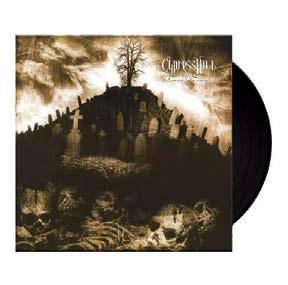
“We always considered ourselves the champions of cannabis culture in terms of hip-hop and mainstream music,” B-Real has said. “We wanted people to know that we weren’t just about smoking, we were about educating people about all aspects of the culture.”
Naturally, “Black Sunday” also featured more classic stoner anthems, including “Hits From the Bong,” “I Wanna Get High” and a brief interlude entitled “Legalize It” that layered quotes from Herer and HT editor Steve Bloom over a funky guitar groove. Cypress’ controversial Cannabis support garnered them a huge following among college kids and a ton of media attention. Thanks in part to this coverage, “Black Sunday” debuted at No. 1 on the Billboard 200 chart, making Cypress Hill the first hip-hop group to have two albums in the Top 10 simultaneously. Selling over a quarter million copies in its first week, it went on to go triple platinum and earn two Grammy nominations.
I WANNA GET HIGH
Riding high on the success of “Black Sunday” and the growing influence of hip-hop, Cypress Hill continued their marijuana-fueled march into mainstream American culture.
“We always considered ourselves the champions of Cannabis culture in terms of hip-hop and mainstream music.”
Months after the album’s release, the band was booked to perform on the Oct. 2, 1993, episode of “Saturday Night Live.” Though SNL was known for subversive, counterculture humor, Cypress was admonished by numerous network and record company executives not to smoke pot on stage. Nevertheless, when it came time for their second performance, “I Ain’t Goin’ Out Like That,” DJ Muggs “felt like he needed to make a statement.” As the song began, Muggs defied the warnings — announcing: “Yo New York City… they said I couldn’t light my joint … but we ain’t goin’ out like that,” then firing up and puffing on a doobie. As a result, producer Lorne Michaels banned them from the show.
“I was like, ‘Man, fuck them,’” Muggs told Revolt in 2022. “Cause, you know, we were young and aggressive. We really just didn’t give a fuck.”
A few years later, Cypress reached an even larger TV audience when they made a guest appearance on another pop culture institution, “The Simpsons.” During the May 19, 1996 episode “Homerpalooza,” an animated version of the trio begins to perform “Throw Your Set in the Air” (from their third album “Temples of Boom”), during which Bart and Lisa notice an odd aroma in the air that “smells like Otto’s jacket.”

own annual marijuana music festival, the Cypress Hill SmokeOut. Hosted by Cheech and Chong, the show featured an array of activist speakers and rap, reggae and metal performers. In 2010, the SmokeOut made history as the first music festival to allow licensed medical marijuana patients to consume their Cannabis legally.

Despite several hiatuses to pursue solo and side projects, these Stoned Raiders have continued to crank out groundbreaking ganja-inspired grooves for over three decades — releasing eight more albums featuring numerous other reefer rhymes, including “High Times,” “Ganja Bus” (with Damian Marley), and the hilarious “Dr. Greenthumb,” in which B-Real plays a goofy grow guru sporting a lab coat, stethoscope, afro wig, nerdy glasses and buck teeth.

There’s also another scene backstage where they’re accused of ordering the London Symphony Orchestra while high, then perform a rendition of “Insane in the Brain” with classical accompaniment (another notorious “Simpsons” prediction that eventually came true when Cypress performed with LSO last July!).
Throughout the 1990s, Cypress Hill widened their fanbase by touring with several mega festivals, such as Lollapalooza, H.O.R.D.E., Warped Tour, Smokin’ Grooves, and even Woodstock ’94, where they performed alongside rock icons like Metallica and Aerosmith (and added percussionist Eric “Bobo” Correa to its lineup).
But regardless of where they played or who they played with, Cannabis remained a consistent component of Cypress’ live shows — smoking cartoonishly large joints on stage, encouraging their audience to light up, and even inviting Herer up to drop some knowledge on the crowd before their sets. Then, in 1998, the group founded their
Eventually, B took his commitment to Cannabis — and his wacky alter ego — well beyond the world of music. In 2009, he founded his own streaming network, B-Real TV, where he hosts several podcasts, including “The Dr. Greenthumb Show” (dubbed “The Highest Show in the World”) and “The Smokebox,” where he and various celebrity guests hotbox one of his classic lowriders. In 2018, B opened his first Dr. Greenthumb’s dispensary in Sylmar, California, and has since expanded to seven locations across the state. He’s also launched two Cannabis brands, Dr. Greenthumb and Insane, and a line of glass joint filters called Phuncky Feel Tips.

To date, Cypress Hill has sold over 20 million albums worldwide, been nominated for three Grammys, and even been honored with a star on the Hollywood Walk of Fame in 2019. But despite these accomplishments, their greatest impact on our culture is how their music and advocacy have helped lead marijuana into the mainstream acceptance it enjoys today.
“I like to think that Cypress Hill had something to do with changing that culture and that mentality,” Sen Dog once said. “I will forever believe for the rest of my life that Cannabis is actually something that is positive for the earth and positive for human beings.”

Visit WorldofCannabis.Museum/Cannthropology.










I DON’T KNOW if the guy who invented Italy’s most important contribution to the world was smoking a pepperoni-sized doob when he changed the course of civilization by going robust on the crust. Still, that champion put the chow in ciao. I mean, there are only so many ways you can embellish a burger, but with a pizza, the mouthwatering combinations are exponentially endless.
Like, you could empty your takeout box of General Tsao’s chicken for a mound on the round, pop it in the oven to completion, and you’ve invented the Chinese Pizza. I know. You’re an award-winning innovator.

Artichoke hearts, sun dried tomatoes, pineapple and broccoli all in the same bite? Oh mio dio! That means “oh my god” in the language of pizzalian. You throw on some cured meat and 18 different types of cheese — fuggedaboudit! Hell, you could throw a raw salamander on that fucker, and I’ll bet someone somewhere would eat it if it were baked in a wood-fired oven.
Maybe Leonardo Da Vinci was in the wrong business. Because I’ll bet, an 8-year-old can’t tell you who he was, but they can tell you who Mario and Luigi are. Sure, they are potentially the most popular video game characters on the planet, but I’ll bet a thousand lira that they were named after guys with spaghetti sauce stains on their wife-beaters who shout a lot.
I understand they have a tilted tower in a city called Pisa, which lends the name to what my buddies and I call the stack of leftover boxes the morning after a raging party. And if the boxes are somehow leaning, we consider that an omen from the almighty.
So, we commence a bong sesh to honor the unexplainable forces of the universe.
And then, we search for the leftover crust.













